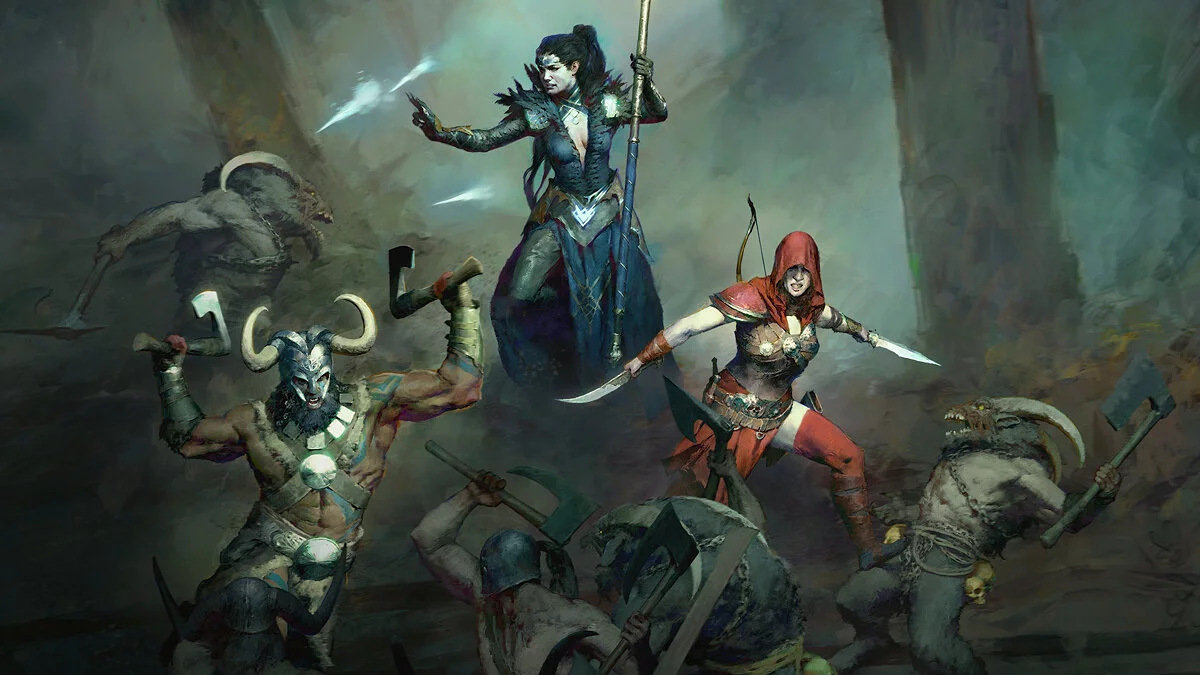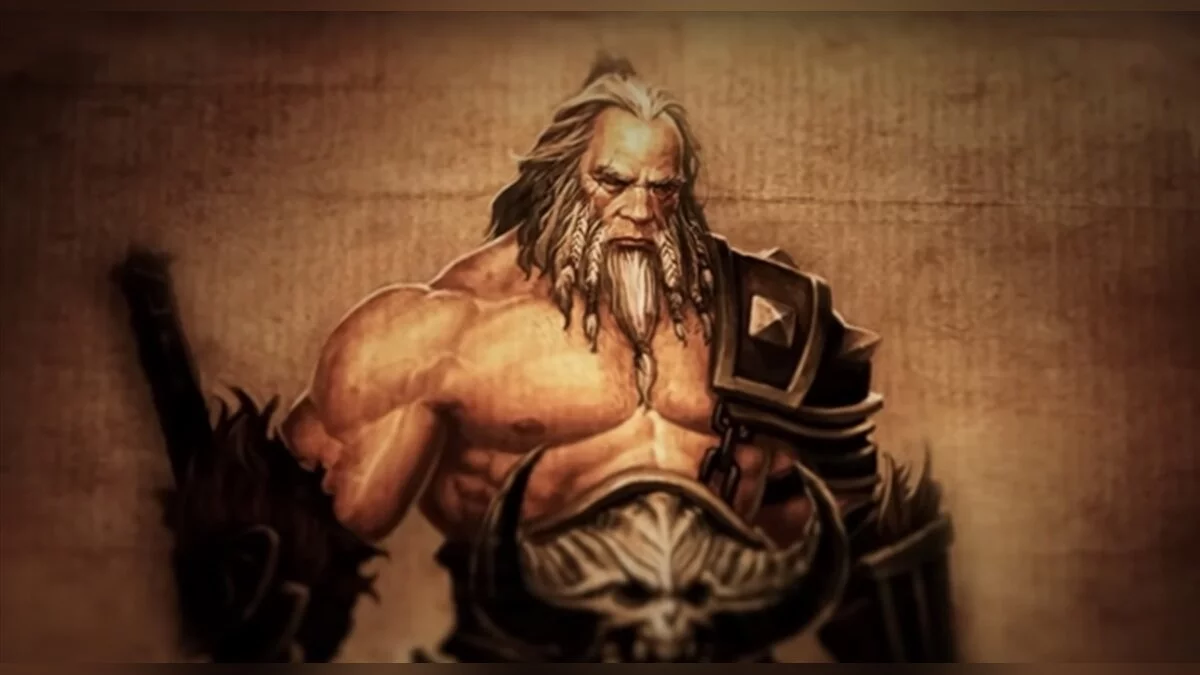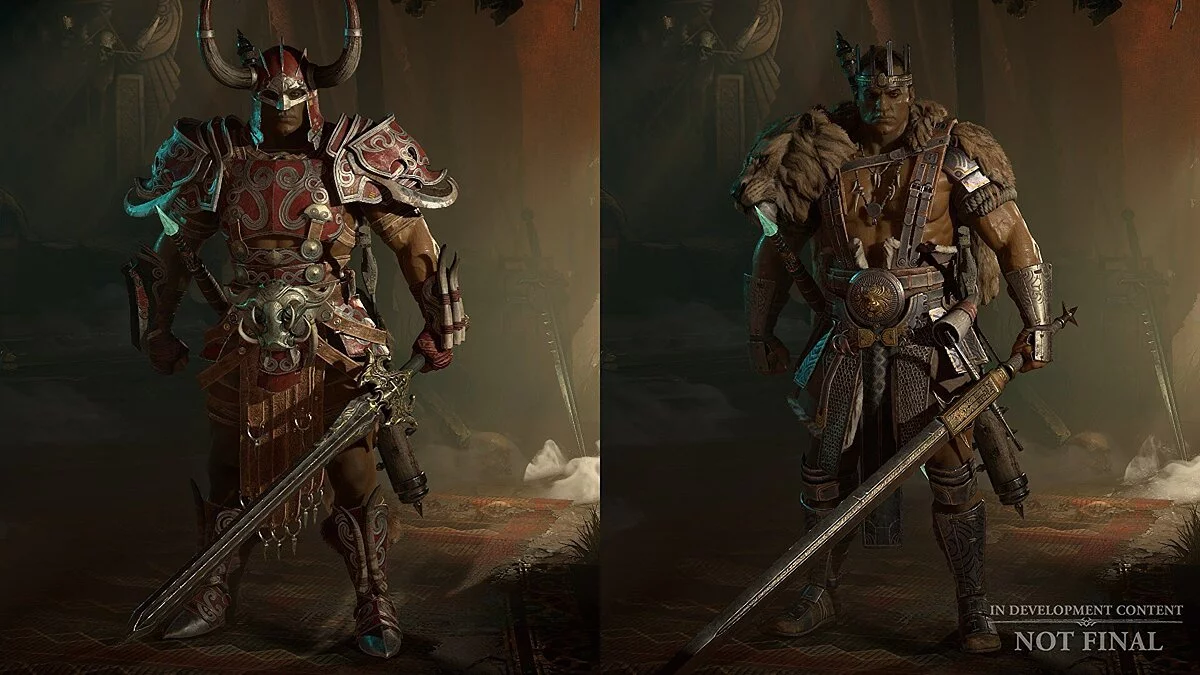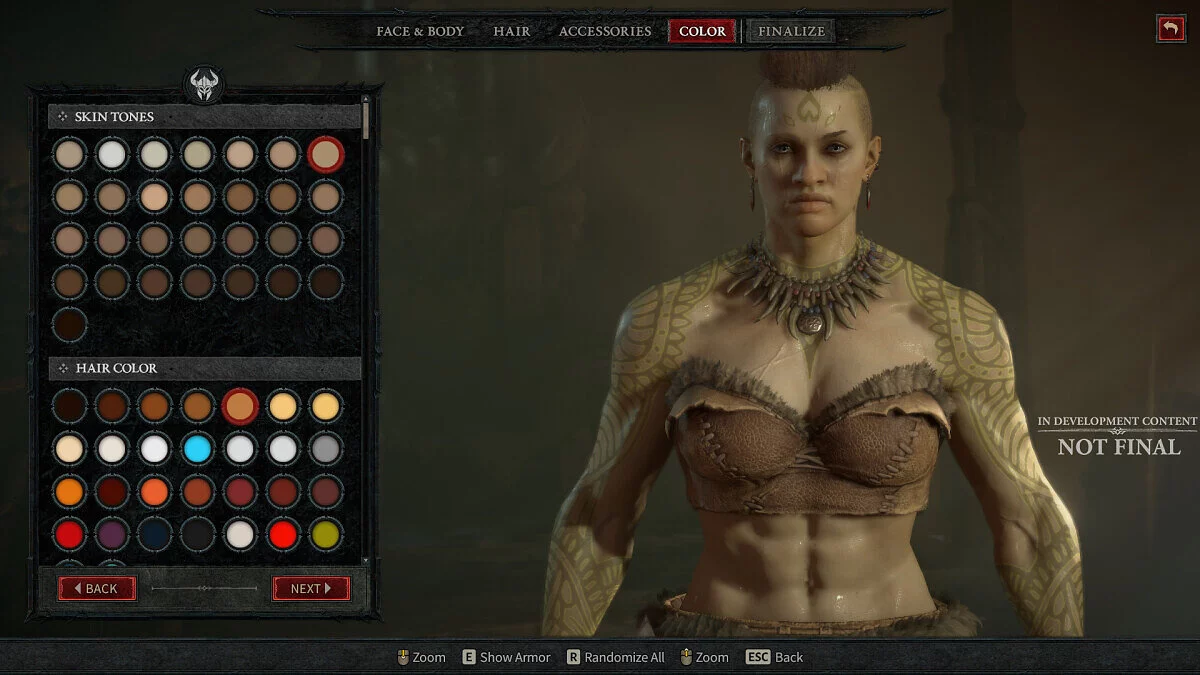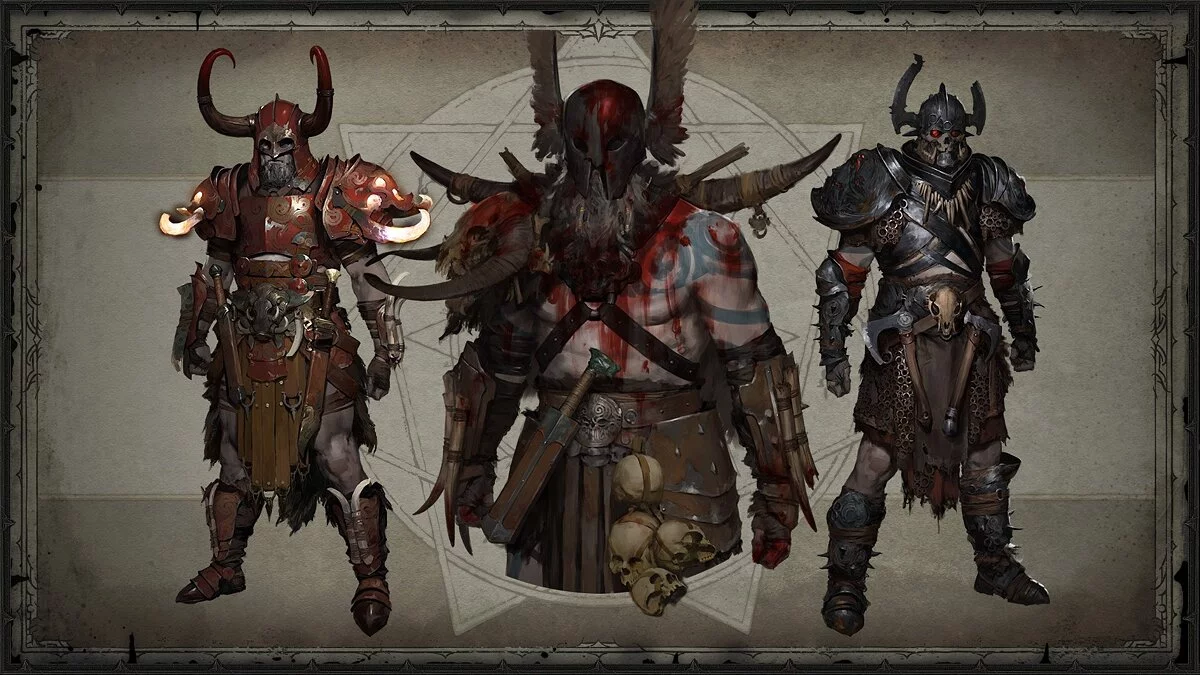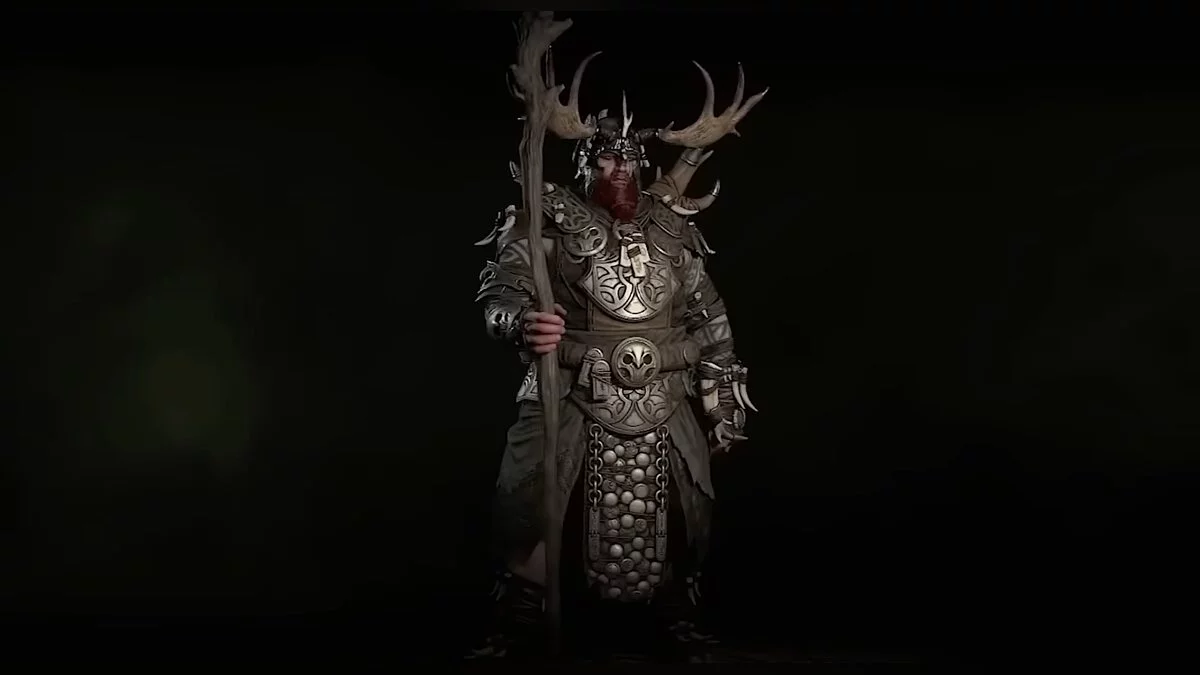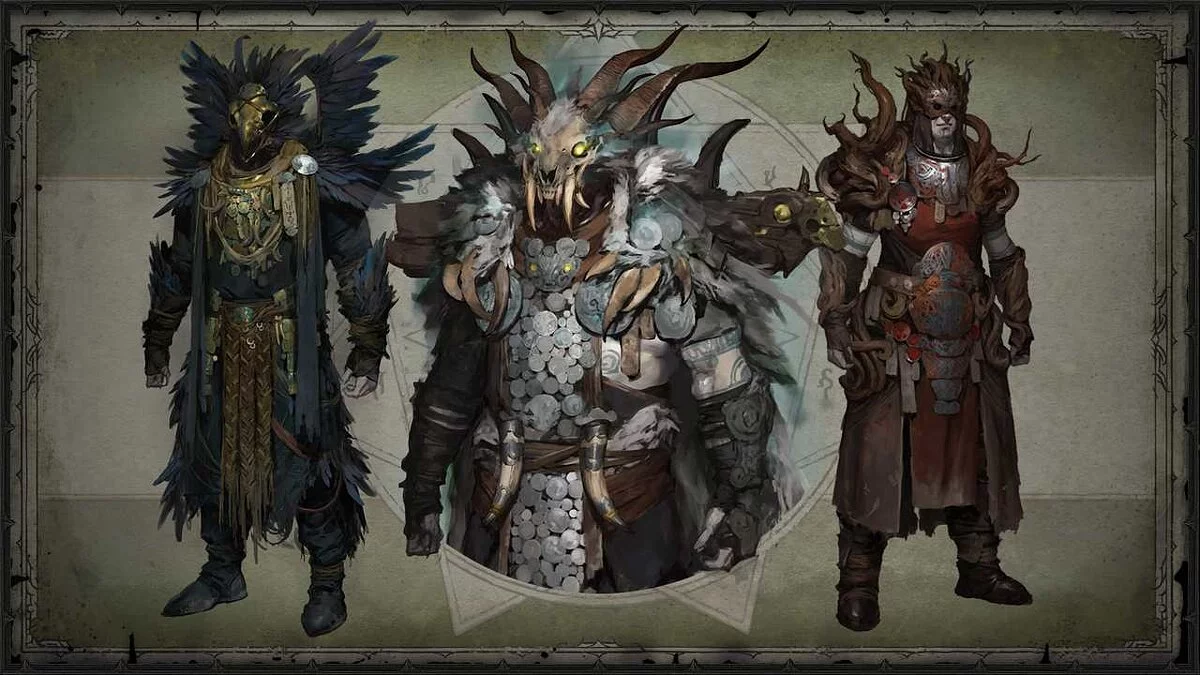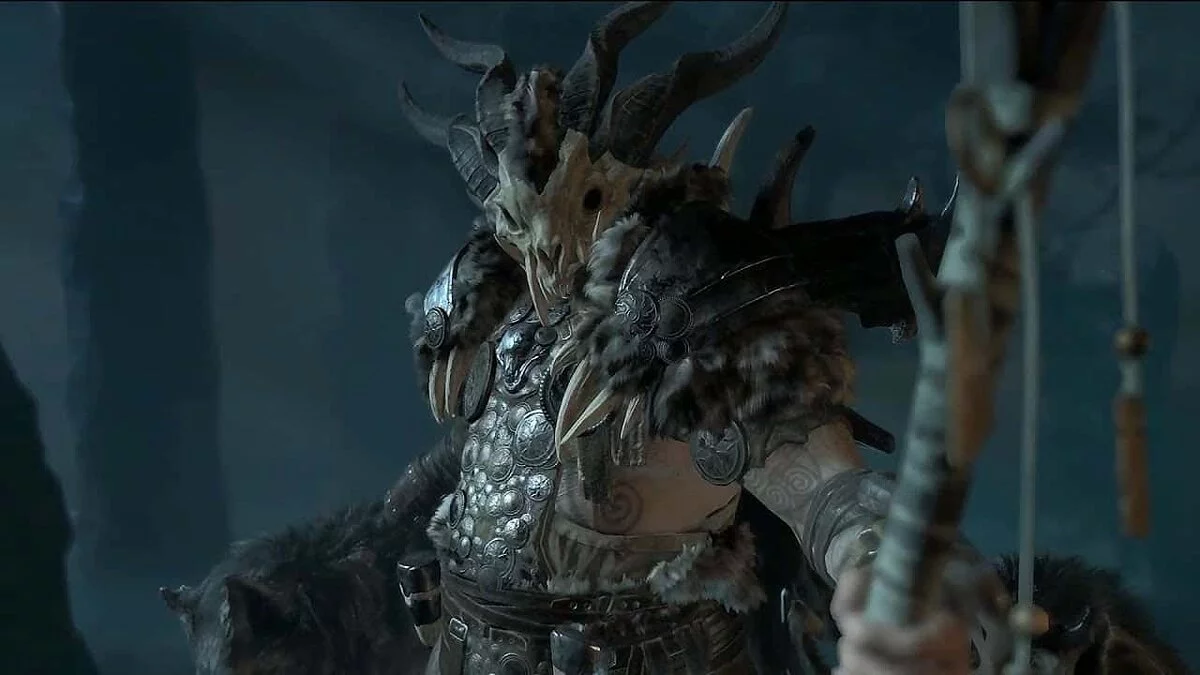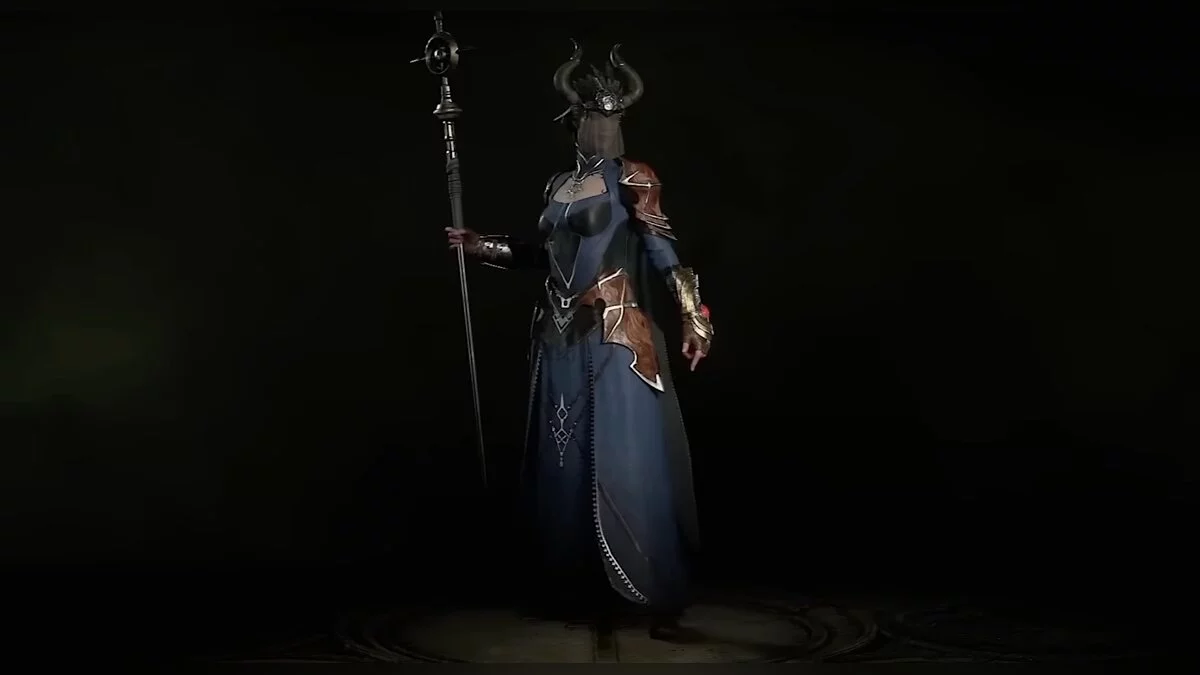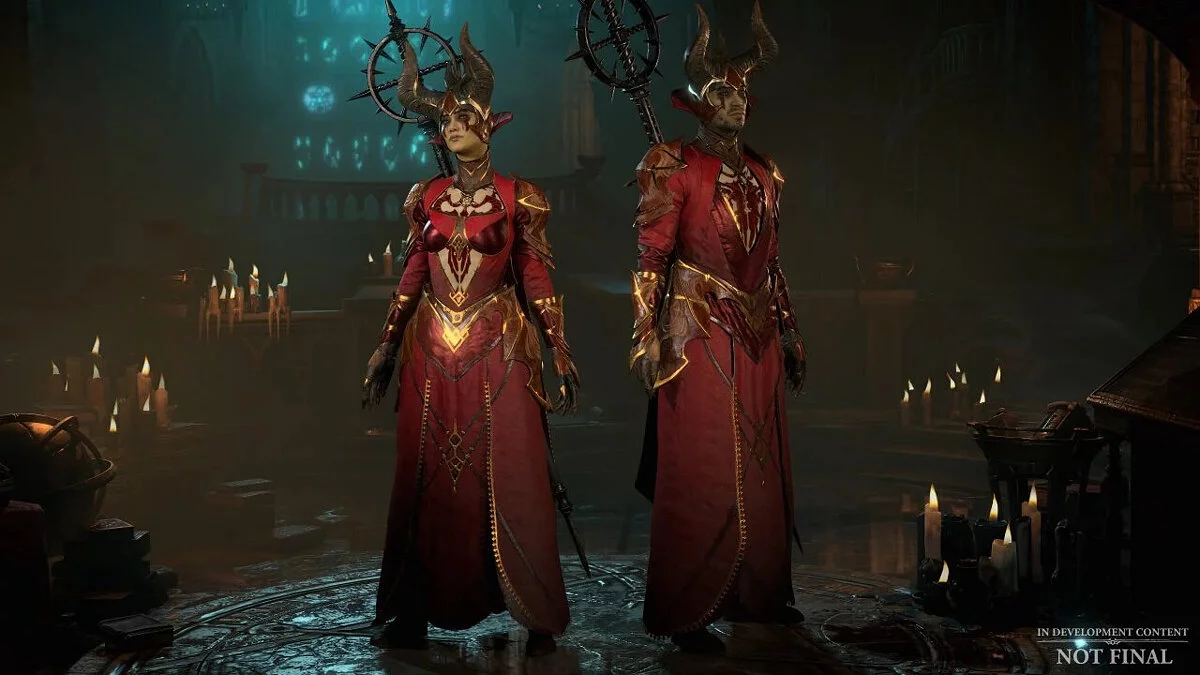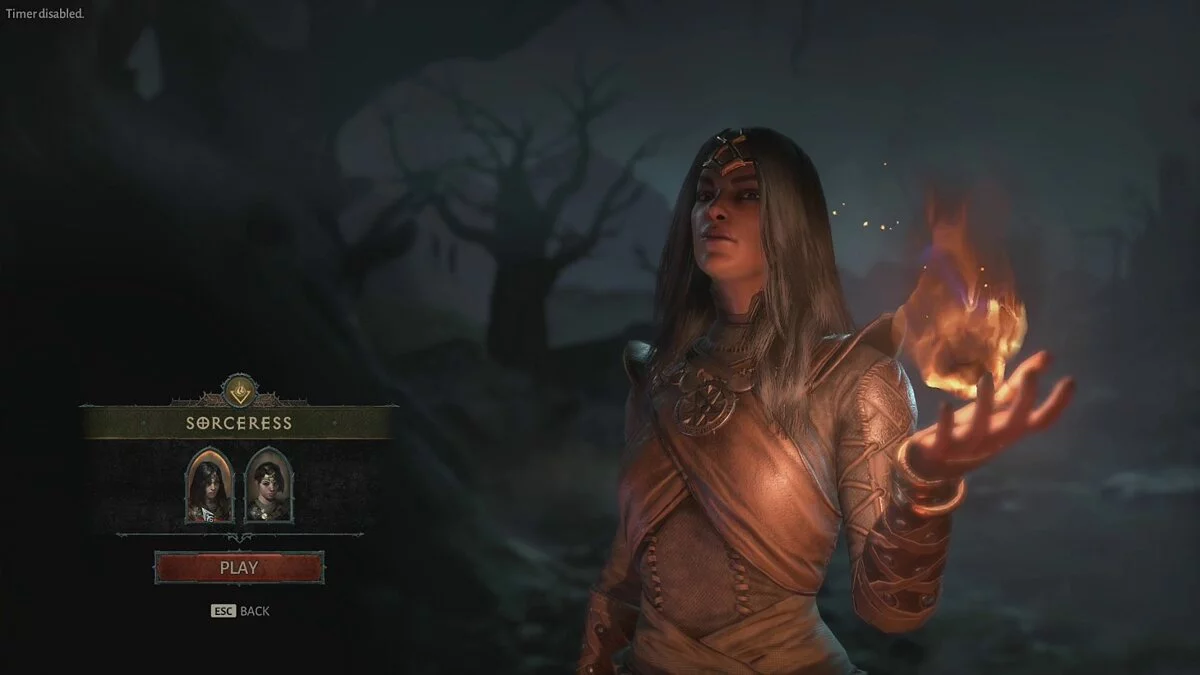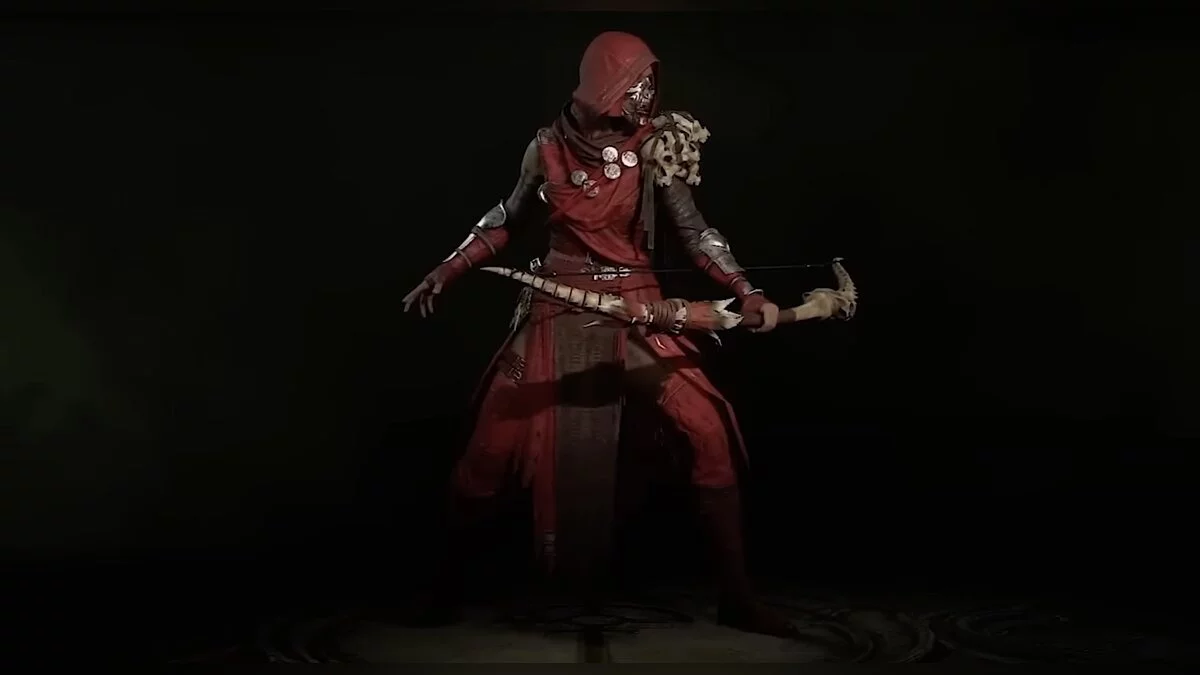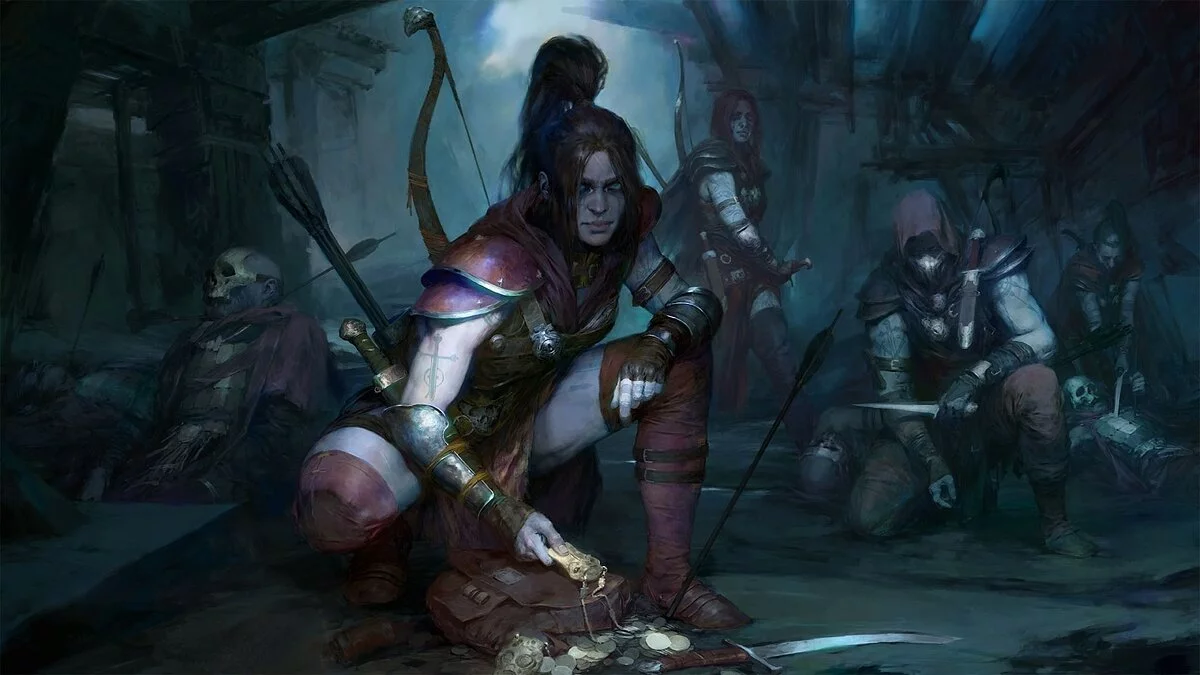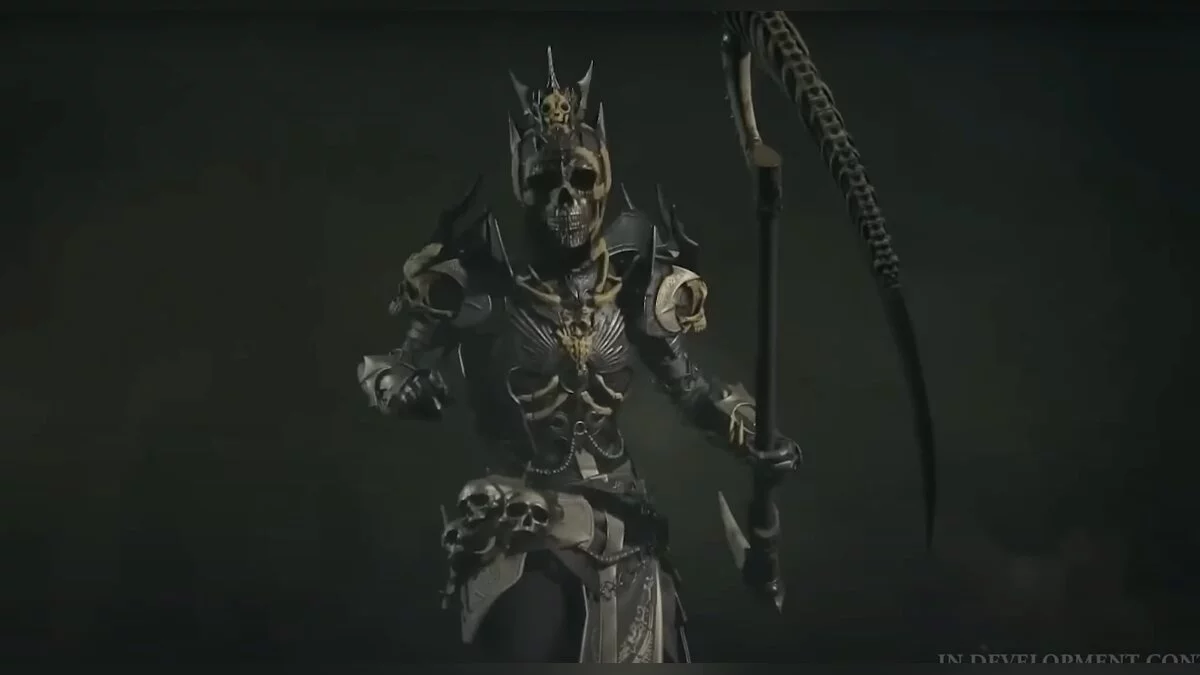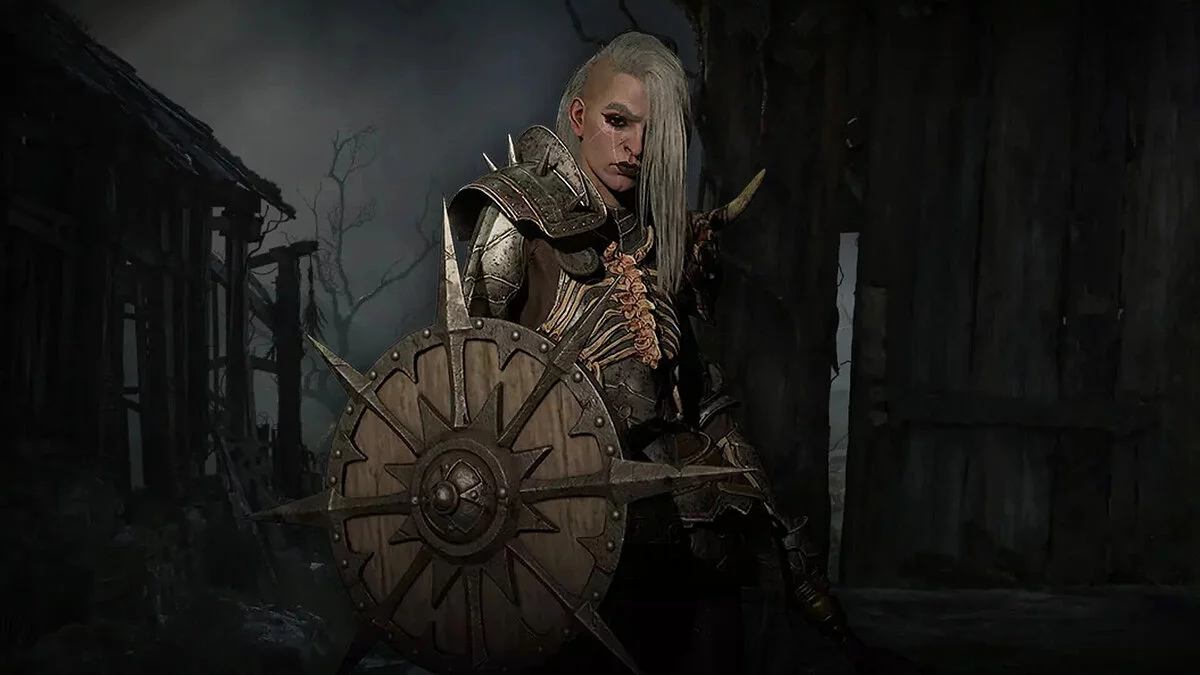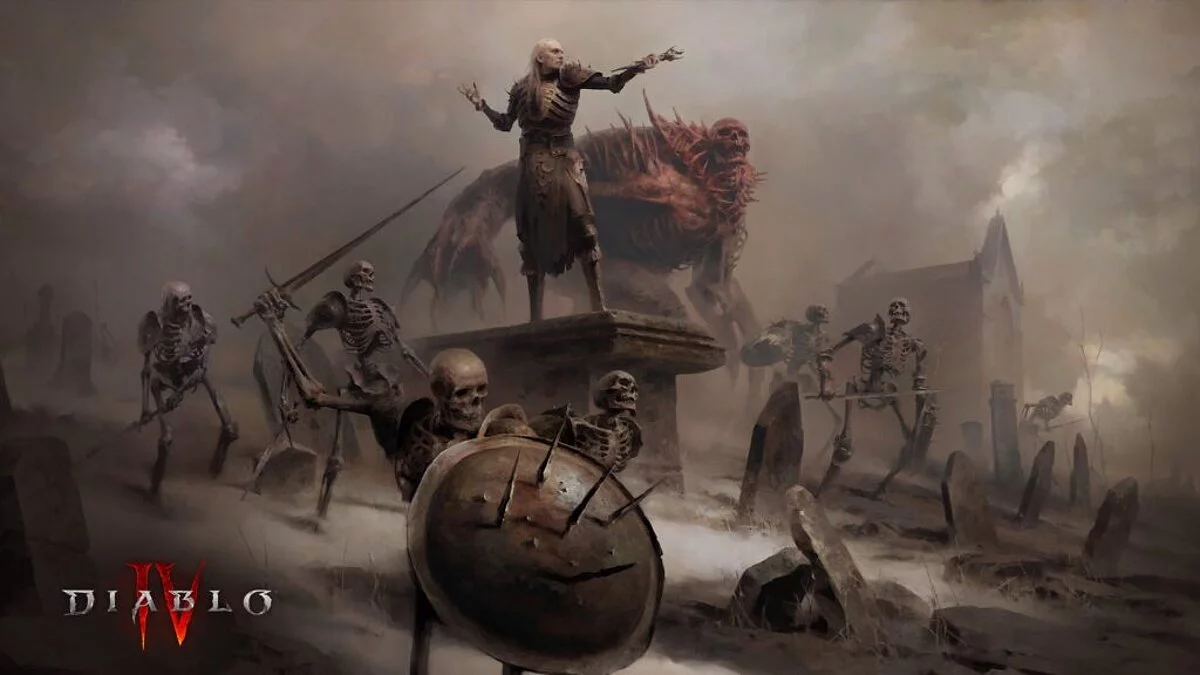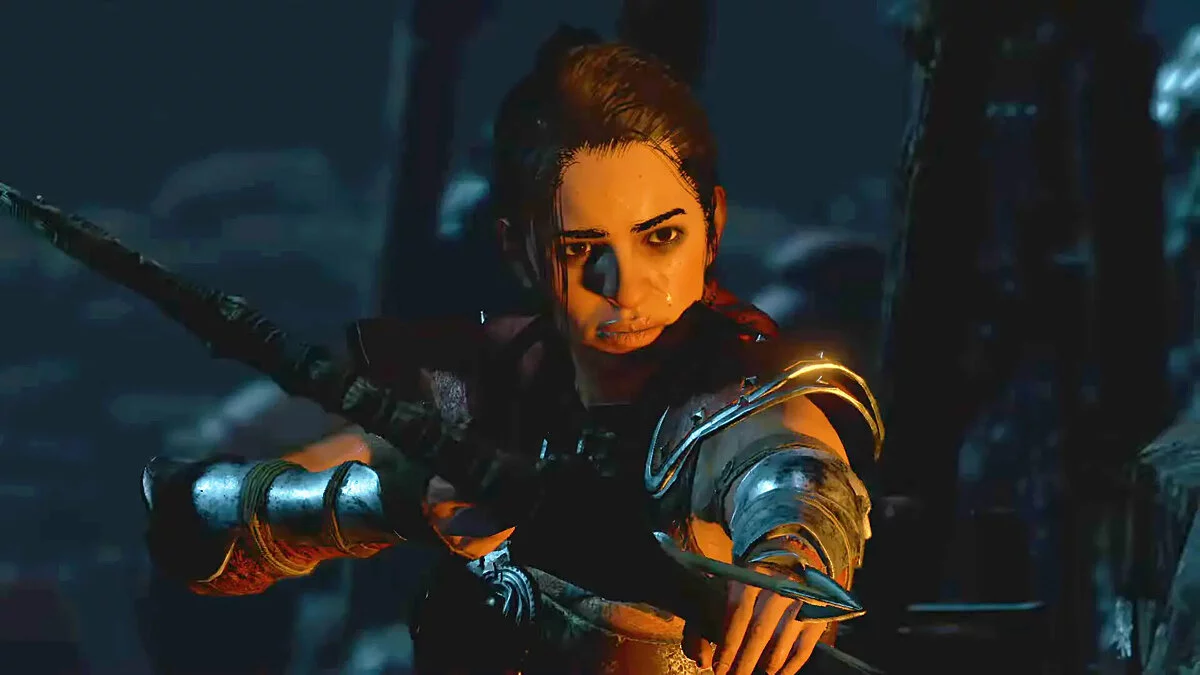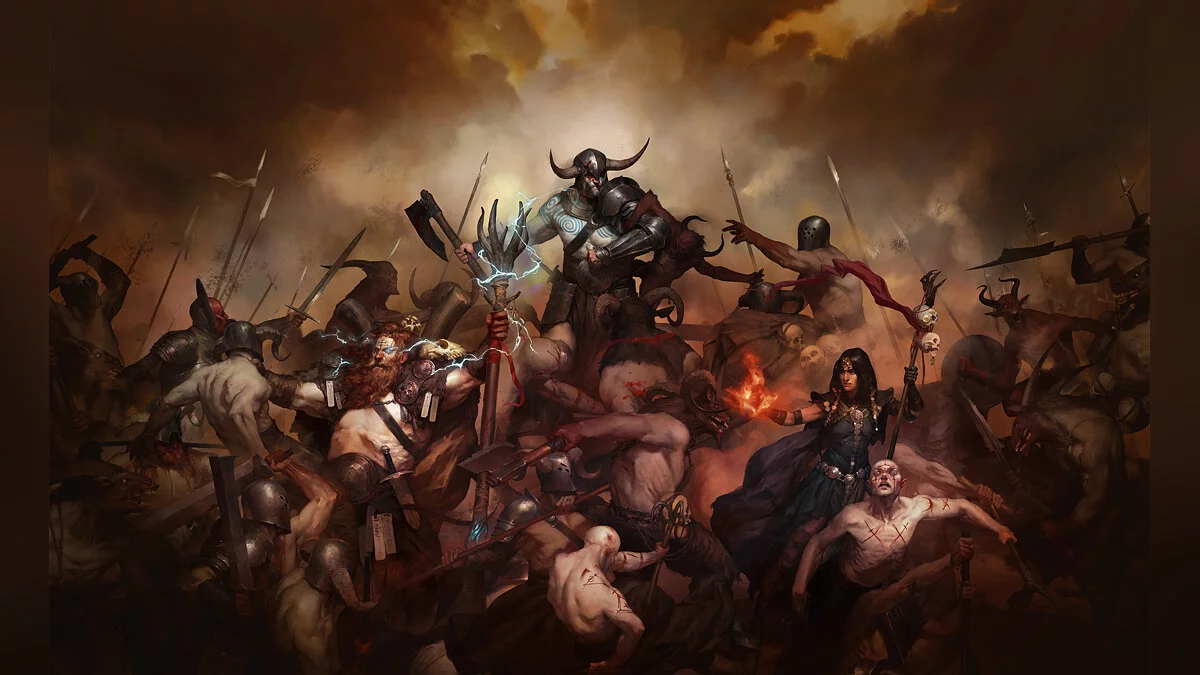Guide to Classes in Diablo 4: Best Classes for Beginners
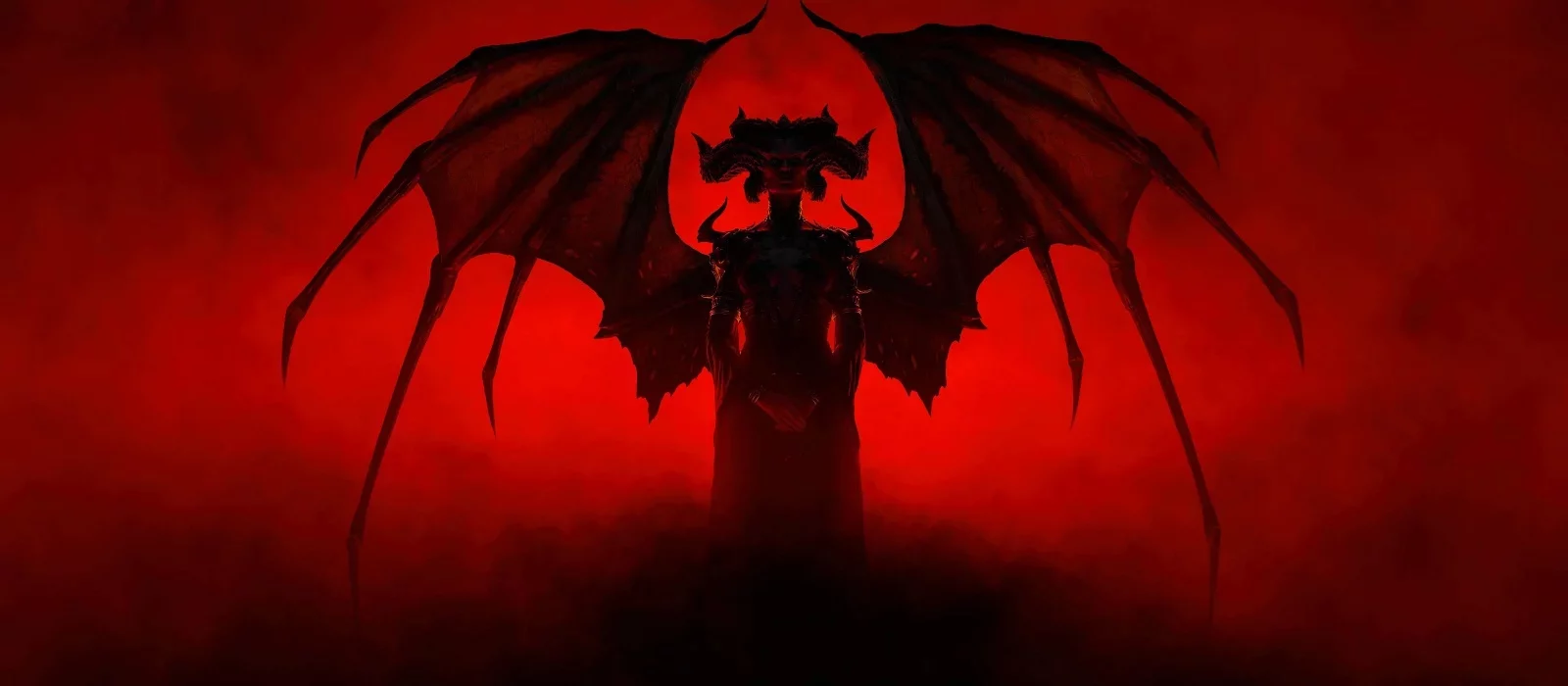
Choosing a class is the most important step at the start of any Diablo game. After the beta release of Diablo 4, we got a more or less complete idea of the fighters that will be available at launch. However, not all of them are equally suitable for novice gamers who haven't played the previous parts. Conversely, for seasoned fans, some classes may seem too simple and boring. To help with the choice, we have prepared a detailed guide on all available classes, their abilities, pros, and cons. We will also discuss which class is best for a first playthrough and why.
How many classes are there in Diablo 4
The list of starting classes has long become a standard for Diablo. However, there are sometimes changes. For example, the necromancer appeared in the third part only after the DLC, whereas now it is one of the starting characters. In the beta, five classes are available:
- Barbarian;
- Sorcerer;
- Rogue;
- Druid;
- Necromancer.
As before, you can choose the gender and also fine-tune the appearance of the hero. It is expected that future DLCs will add at least two additional classes. However, which ones exactly are still unknown.
Barbarian
As you might guess, the barbarian is a fierce melee fighter who deals exclusively physical damage. Forget about magic and long-range attacks. If you choose this class, you will always be in the thick of the battle. However, if the fight drags on, the barbarian will have a hard time and can be overwhelmed without support.
The main feature of the barbarian will be the Arsenal system — a unique class mechanic. After reaching the fifth level, you can assign separate weapons to each attack skill. The chosen blades and clubs will also gain their own experience, becoming increasingly effective. There are ten such ranks in total. Simply put, the barbarian will be able to carry four types of weapons simultaneously and level them up very quickly, gaining significant additional bonuses.
An interesting feature of the ranks is that weapons gain experience with each hit, not kill. Also, blades do not change in the PvP zone.
All barbarian skills are divided into 6 categories:
- Basic Attacks — deal reduced damage and allow you to accumulate the main resource (rage), as well as apply control effects;
- Core Skills — consume rage and deal increased damage, usually form the basis of the build, depend on weapons and class mechanics;
- Defensive Skills — control skills that help slow down the enemy and partially restore health;
- Brawling Skills — do not consume rage and only require cooldown time, add variety to your build, some apply positive effects to other players;
- Weapon Mastery Skills — do not require rage, deal increased damage, most often used against groups of enemies;
- Ultimate Skills — special abilities unique to each character. Deal colossal damage to one or a group of enemies, only one can be chosen.
The barbarian also has a number of passive skills. Similar to ultimate skills, only one can be chosen:
- Unconstrained — increases the maximum duration of Berserk by 5 seconds and its damage bonus by 25%;
- Walking Arsenal — dealing direct damage with two-handed blunt, two-handed slashing, or dual-wielded weapons increases the damage dealt by 10% for 6 seconds. While all three damage bonuses are active, you deal an additional 15% increased damage;
- Unbridled Rage — core skills deal 135% increased damage but cost 100% more rage;
- Gushing Wounds — killing a bleeding enemy creates an explosion that deals 12% of the bleed damage over 5 seconds.
The barbarian has quite a few talents, but overall they can all be divided into several types:
- Increasing and speeding up rage accumulation;
- Increasing movement speed;
- Increasing damage;
- Speeding up health recovery;
- Enhancing control.
Summarizing all the known information, we can highlight the following strengths and weaknesses of the character.
The barbarian is undoubtedly very strong and capable of dealing massive damage, but struggles with prolonged battles and enemies that attack from a distance. All his active skills depend on rage, which decreases outside of combat. Many buffs increase damage and movement speed, but control abilities and truly serious skills have very long cooldowns. In melee combat, it will be harder to dodge especially strong attacks from enemies and bosses, making the barbarian very dependent on the healing abilities of team members. Playing solo can sometimes be challenging. Finally, the Arsenal will allow you to prepare for any unexpected situation, but at the beginning of the game, the barbarian will be especially weak due to a severe lack of rage. The gameplay for him might seem too monotonous and boring.
Druid
An interesting character that many underestimate. In Diablo 4, the druid becomes a shapeshifter with the forces of nature. He can fight equally well in melee and at a distance. The main feature is the ability to transform into a bear or a werewolf. Both forms have obvious advantages and disadvantages — the bear is strong but slow, while the wolf is weaker but more mobile. The druid summons animals to assist him, which distract enemies and allow for maximum damage output.
Interestingly, the forms are tied not to buttons but to abilities. This means that when activating the desired skill, the druid will automatically transform and deal damage according to the chosen form.
The druid deals not only physical damage but also lightning and poison damage. To use nature magic, the character needs spirit, which accumulates during basic attacks.
The class feature will be spirits. There are 4 in total: deer, wolf, eagle, and snake. Each animal provides certain enhancements, which increase as the spirit levels up.
All druid skills are divided into 6 categories:
- Basic Attacks — deal small damage and allow you to accumulate the main resource (spirit), as well as apply control and debuff effects;
- Core Skills — consume spirit and deal increased damage, usually form the basis of the build, depend on weapons and class mechanics. It is thanks to these skills that the druid changes form;
- Defensive Skills — control spells that help slow down the enemy and partially restore health;
- Wrath Skills — only require cooldown time, add variety to your build, some apply positive effects to other players. If you manage to reduce the cooldown time, they can become primary abilities;
- Companion Skills — allow you to summon ally creatures, which will also apply positive effects to the character or debuff enemies. The number of summoned creatures can be increased with equipment;
- Ultimate Skills — special abilities unlocked at the last levels of progression, unique to each character. Deal colossal damage to one or a group of enemies, only one can be chosen.
Talents have two directions:
- Magical;
- Shapeshifting.
The druid can be an effective fighter at both close and long ranges. Thanks to different forms, the character can easily withstand heavy damage, but the form being tied to skills does not allow staying in one form for long — you will have to quickly adapt not to the situation on the battlefield but to the cooldowns of abilities.
Sorcerer (Wizard)
One of the most classic and simultaneously powerful characters in the entire Diablo series. The Sorcerer is a master of elemental damage and a specialist in ranged combat. His weapons are wands and staves. Equally good against single targets and groups of enemies. The feature of the wizard in Diablo 4 is that the ultimate abilities differ depending on the school of magic.
The class mechanic is called the Enchantment System and allows the wizard to replace two active abilities with passive ones.
All sorcerer skills are divided into 6 categories:
- Basic Attacks — deal small damage and allow you to accumulate the main resource (mana), as well as apply control and debuff effects;
- Core Skills — consume mana and deal increased damage, usually form the basis of the build, depend on weapons and class mechanics. All core skills are aimed at area damage;
- Defensive Skills — spells that allow you to avoid damage in ranged and especially melee combat, also apply negative effects on enemies;
- Conjuration — only require cooldown time, add variety to your build;
- Mastery Skills — allow you to complement the chosen build with interesting abilities and effects to already learned skills;
- Ultimate Skills — special abilities that deal huge damage to one enemy or an entire group, only one can be chosen.
Most skills have already appeared in previous parts, but the ultimate skills are new. Despite their combat properties, experienced players are unlikely to focus on them. The long cooldown of such magic makes it almost useless in serious battles, where quick spells with short cooldowns are much more effective.
Talents will allow you to reduce the mana cost for some skills, increase damage, speed up mana regeneration from active and passive actions, extend control effects, and also increase survivability.
In the fourth part, the wizard has not changed drastically. Those who love to play as him will immediately feel at home. When casting spells, you need to monitor the mana level. Although it regenerates fairly quickly, without the valuable resource, the sorcerer risks being helpless in the face of the enemy. You will easily win prolonged battles, but due to reduced defense, you are forced to constantly move. The advantages of the wizard include a whole range of defensive skills that not only reduce received damage to zero but also apply negative effects on enemies.
Rogue
The Rogue will be a complex character, incorporating all the best from previous variations (Amazon and Demon Hunter). It is also one of the strongest heroes, making it especially interesting to play.
The Rogue's feature is a combination of agility and various debuff effects. You can equip both ranged and melee weapons simultaneously. Like the Druid, you don't need to switch between equipment; just select the appropriate ability. This way, you can almost instantly change distances and be unpredictable.
The Rogue has three class mechanics that unlock through the storyline. The first is combo points. They accumulate when using basic skills and significantly enhance some core abilities.
The second class mechanic is Inner Sight. Marks appear above enemies. Killing such enemies fills a special gauge, after which you can use the main resource without limit for 4 seconds.
The third mechanic is Preparation. This ability reduces the cooldown time of ultimate skills, turning the Rogue into a real killing machine.
All Rogue skills are divided into 6 categories:
- Basic Attacks — deal small damage and allow you to accumulate combo points, as well as apply control and debuff effects;
- Core Skills — deal increased damage, usually form the basis of the build, depend on weapons and class mechanics, are enhanced by combo points, and work well with basic skills;
- Agility Skills — allow you to quickly move around the arena, dodge attacks, and escape from encirclement, also help initiate combat and quickly close the distance;
- Subterfuge Skills — allow you to trick or stun the enemy and exit the fight unnoticed, help preserve health and give time for its recovery;
- Imbuements and Impact Skills — enhance attacks by applying various effects to weapons, such as poison or freezing. Basic and core abilities deal increased damage and apply chosen effects. Especially useful in co-op;
- Ultimate Skills — special abilities unique to each character. Deal colossal damage to one or a group of enemies, only one can be chosen.
The Rogue should become the most versatile class, but mastering all its features may not be easy. To make the hero a dangerous fighter, you will have to regularly build up the combo counter. High mobility will not only allow you to catch up with enemies but will also be a vital skill. Modest defensive skills won't save you from heavy direct damage — you'll have to run away. The Rogue is especially useful in co-op play when covered by a Sorcerer or Druid. Then you can easily sneak up on enemies from behind and deal damage without harm to your health.
Necromancer
It's time to discuss the ultimate class. For several parts now, the Necromancer has been considered the most powerful character, and it seems that Diablo 4 will be no exception. The hero specializes in summoning and ranged attacks, and uses two resources as mana — essence and corpses. Essence regenerates automatically over time, and basic attacks can speed up this process. There are always plenty of corpses, so there will be no shortage of them. Remains are required for summoning minions or enhancing skills.
The main weapon will be a scythe, which can be complemented with a shield. The unique class mechanic is the Book of the Dead. Thanks to this artifact, you can choose whom to resurrect — a skeleton warrior or mage, as well as a golem. In turn, each category has its own modifications. For example, skeleton warriors can become defenders, soldiers, or reapers.
The Necromancer can sacrifice some components of their bone army for personal gain, thus receiving decent buffs.
As with other characters, skills are divided into several categories:
- Basic Attacks — deal small damage and allow the accumulation of the main resource (essence), as well as apply control and debuff effects;
- Core Skills — deal increased damage, usually form the basis of the build, depend on weapons and class mechanics, are enhanced by combo points, and work well with basic skills;
- Macabre and Curse Skills — apply debuff effects, enemies deal reduced damage and, conversely, receive increased damage, as well as being slowed. Negative effects can be directed at both a specific target and an area;
- Summoning Skills — auxiliary abilities that help control or weaken enemies. Spells are not related to the restoration of the army of the dead, which is handled by a separate button;
- Ultimate Skills — special abilities unique to each class. Deal enormous damage to one or a group of enemies, only one can be chosen, and they have very long cooldowns.
Talents will help increase the damage from dark magic, the duration of control effects, health regeneration, and the application of positive effects to the summoned army, reduce the cost of the main resource, and much more.
It is already known that the hero can be leveled up in one of four playstyles: bones, blood, darkness, and army. Each of the listed styles has its own set of talents and skills.
It is obvious that the necromancer is vulnerable without minions, so if you like to personally deal with crowds of enemies, this class is not suitable. Also, the hero's maximum potential will only be revealed with a balanced build, you will have to study skills and combine them wisely.
Best Classes in Diablo 4. Who to Start the Game With
The choice of class entirely depends on your experience. If you are a beginner and do not want to delve into building a build, the sorcerer is suitable. He has the best damage-focused magic, as well as excellent crowd control skills. Even without fine-tuning, you will become a formidable force both in solo play and in co-op. Most of the sorcerer's skills have not changed from the previous part, which may make long-time fans reluctant to choose this class.
If you want to chop enemies up close, choose the barbarian. This class is also suitable for beginner players, but it has its own features. The monotonous gameplay and the potential being revealed only by the middle of the leveling process can be tiring. However, you will feel great in solo play.
The druid is a versatile class. He is moderately complex and interesting. He withstands damage well and can fight both at a distance and in melee. The class will appeal to both beginners and series connoisseurs. The only thing that may deter you is the limitation of some abilities and the focus on nature magic.
The last two classes — necromancer and rogue — are the most difficult to master. The rogue can offer very diverse gameplay, but to master it, you need to be a real professional. In addition, the rogue feels much more confident in a team.
The situation with the necromancer is somewhat simpler and resembles the sorcerer. In any case, you will become a formidable force and will be able to easily chop enemies in both solo and co-op modes, but to fully unleash the power, you will have to work hard on the build. The necromancer is great for both beginners and experienced gamers, but in the hands of a master, he will become a real gem.
Other guides
- Co-op Guide in Diablo 4: How to Play with Friends on One Screen
- Best Builds for Barbarian in Diablo 4: Which Skills, Aspects and Gear to Choose
- Builds for Sorceress in Diablo 4: Best Skills, Abilities, Aspects and Enchantments
- Best Builds for Necromancer in Diablo 4: Which Skills, Aspects and Equipment to Choose
- How Aspects Work for Enhancing Gear in Diablo 4: Codex of Power, Extraction and Imprinting
- How and Where to Farm Legendary Gear and Items in Diablo 4
- Where to Find All Altars of Lilith in Diablo 4: Altar Map
- Whispering Obols in Diablo 4: How to Farm and What They Are Used For
- How to Level Up Quickly in Diablo 4
- Builds for Rogue in Diablo 4: Best Skills, Abilities and Aspects
- Diablo 4 deutet auf die Rückkehr des legendären geheimen Levels hin
- Path of Exile 2 auf den 6. Dezember verschoben
-
Best Builds for Barbarian in Diablo 4: Which Skills, Aspects and Gear to Choose
-
Builds for Rogue in Diablo 4: Best Skills, Abilities and Aspects
-
Co-op Guide in Diablo 4: How to Play with Friends on One Screen
-
Whispering Obols in Diablo 4: How to Farm and What They Are Used For
-
How and Where to Farm Legendary Gear and Items in Diablo 4
-
Builds for Sorceress in Diablo 4: Best Skills, Abilities, Aspects and Enchantments
